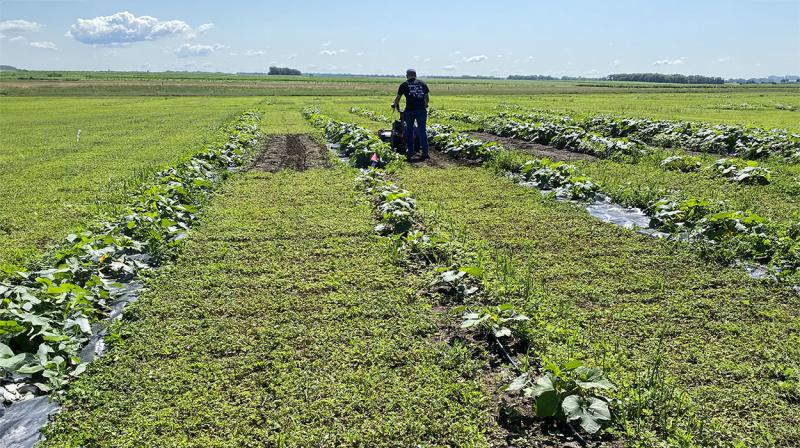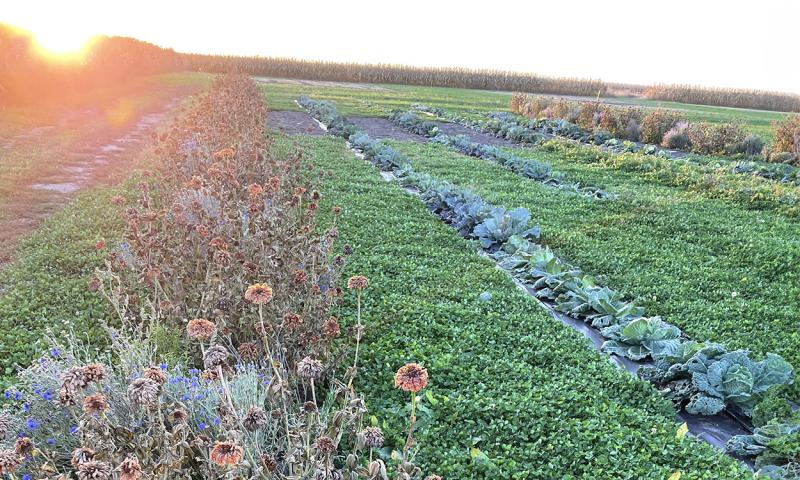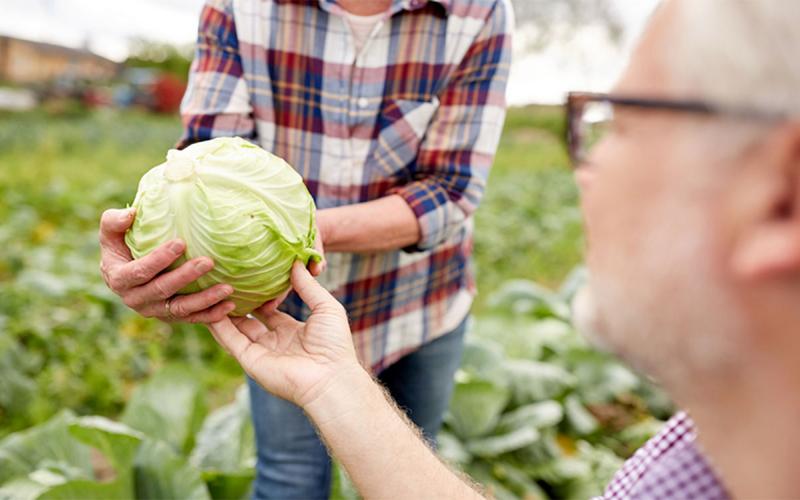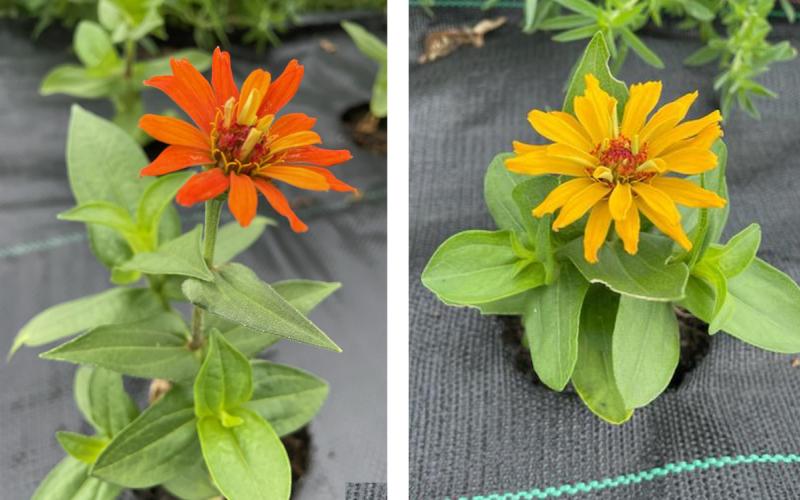Research on clover cover crops grown in combination with four tillage and weed suppression methods was conducted on organic transitional land at the SDSU Southeast Farm near Beresford, South Dakota in 2023. Vegetable crops trialed in these systems included winter squash and three varieties of cabbage grown for a late-fall harvest. Project findings highlight the challenges of establishing perennial clover living mulch when early-season moisture is limited and indicate that even when 30 to 36 inch strip tillage is used, clover growing in pathways between crop rows can still have negative yield impacts. Research on long-term benefits, such as soil health and weed reduction, is ongoing.
The full report can be accessed on the SDSU Open Prairie website, and project results are featured on pages 72, 77, and 91 of the report. This work is funded by the USDA NIFA Organic Transitions Program project 2022-51106-37925, which supports a collaborative research team of soil scientists, agronomists, horticulturalists, economists, and farmer collaborators. Reflections by two project team members on the 2023 season are included below.
SDSU Southeast Farm Vegetable Research Reflections
Evaluation of First-Year Clover Cover Crops as a Living Mulch in Organic Squash Production

Reflection written by Alexis Barnes, SDSU M.S. Graduate Research Assistant.
The year 2023 was my last research season with the Lang lab and was a very fun season to make lasting connections with the community and farm staff.
Although lack of early-season rainfall negatively impacted the clover growth, it was still very interesting to see how weeds and clovers affected squash growth.
The most-rewarding part of the season was donating over 2,000 pounds of winter squash to Feeding South Dakota, which would not have been possible without the help of the Southeast farm staff and the Lang lab team.
Preliminary Assessment of Clover Cover Crops as a Living Mulch in Fall Cabbage Production

Reflection written by Joslyn Fousert, SDSU Southeast Research Farm Agronomy and Horticulture Research Assistant.
Bees hovering, butterflies flying, and hummingbirds zooming from flower to flower were all regular occurrences while I was out in the field this past growing season completing countless hours of data collection and gaining knowledge on how a fall cabbage crop interacted with clover as a living mulch.
It was eye-opening to see how a field, once bare and open to the elements, became its own ecosystem once clover as a living mulch, beneficial flower guard rows, and a fall cabbage crop were established.
The soil health benefits and competition offered against the daily battle against weeds offered inspiration to continue researching what utilizing clover as a living mulch has to offer.
Funding Acknowledgement
This work is funded by the USDA Specialty Crop Block Grant Program Sub-Recipient Agreement 2021SDSU04 and the USDA NIFA Organic Transitions Program project 2022-51106-37925, which supports a collaborative research team of soil scientists, agronomists, horticulturalists, economists, and farmer collaborators.


